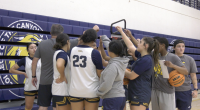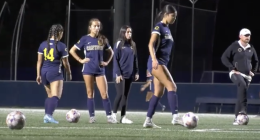As athletes push for stronger performances on the field, the risks to their brains are becoming harder to ignore.
Football and soccer remain two of the leading sports for concussions, and experts say early reporting and new protective gear could be the key to stopping serious and even life-threatening injuries before they happen. Players and coaches are now tackling it head-on.
The CDC estimates up to 3.8 million sports-related concussions occur in the U.S. each year, many going unreported.
Before athletes can prevent concussions, they need to understand what concussions are.
“In sports, per se, like football, or if you even just hit your head on the floor, that’s the physics of your brain. It’s basically floating in your head, and when it moves vigorously, it hits against your own skull. So that’s where the injury occurs,” said Dr. Anirudh Rai, a Primary Care Doctor with Henry Mayo Hospital.
Identifying warning signs early and getting a medical evaluation is critical. Common symptoms include headache, dizziness, blurred vision, confusion, and nausea, and experts say none of these should be taken lightly.
“There are things that you don’t mess with in sports. You know, we test the waters with a lot of ankle sprains, knee injuries, shoulder injuries, and athletes play through orthopedic issues all the time,” said Erick Buitrago, a College of the Canyons Athletic Trainer.
“You know they’re able to get through it, and they’re not severe enough where it’s going to cause any major long-term damage. But with the brain, that can cause major long-term damage,”
Returning to play too soon after a concussion puts athletes at risk for a life-threatening traumatic brain injury.
“There’s a very rare condition called ‘Second Hit Syndrome’, where if someone gets a concussion and they got a head injury on top of that, they could eventually just end up dying,” said Dr Rai.
To lower risks, schools and athletes are focusing on prevention. Equipment like Guardian Caps, worn over helmets during practice, can reduce impact by up to 33%. But gear is only part of the solution; awareness and right technique are just as important.
“A lot of the time I can’t really control getting hit, but a lot of it’s just about how I go about protecting my body when I’m going for a ball,” said Rebecca Ferguson, the COC Women’s Soccer team goalkeeper.









